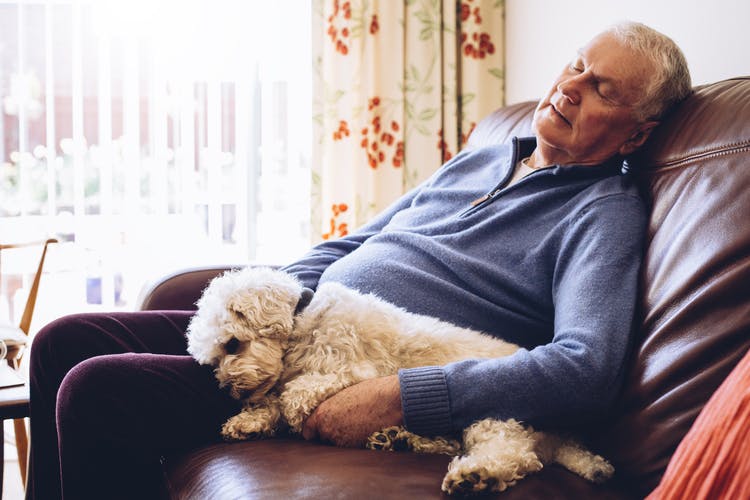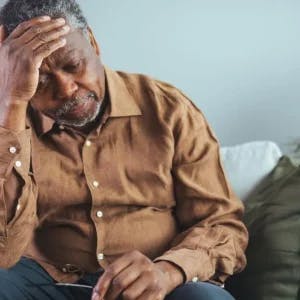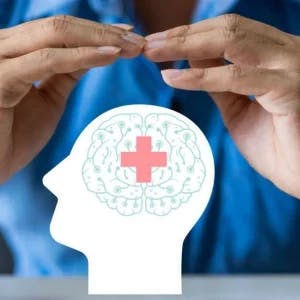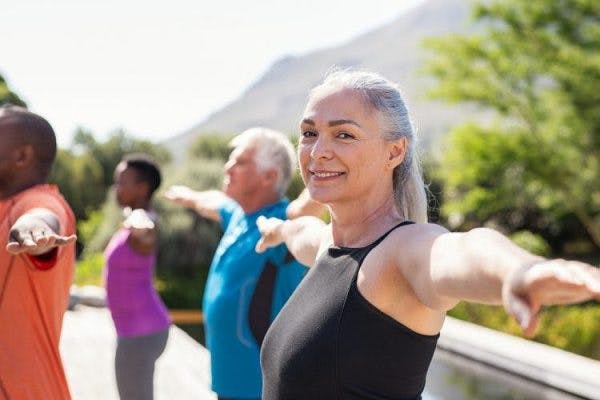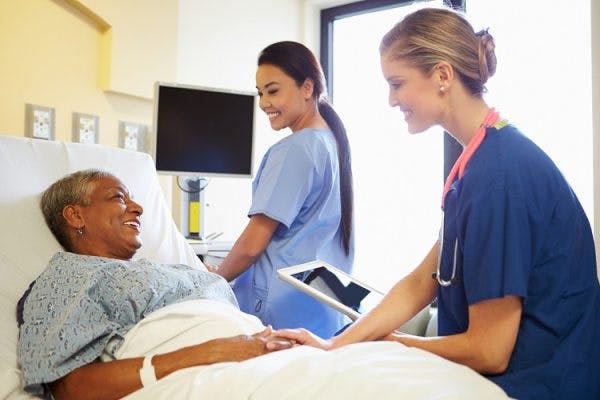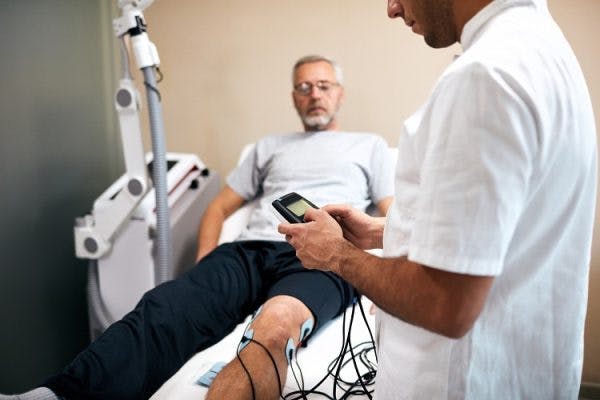Fatigue and excessive sleeping after stroke may fall under a condition known as excessive daytime sleepiness (EDS), or hypersomnia. People with EDS often feel overcome by the need for sleep during the day, even after having a full night’s rest. While sleep is crucial for promoting a healthy recovery, excessive sleeping after stroke can be a sign of more serious underlying problems.
This article will discuss the neurological benefits of sleep, as well as explore the causes and symptoms of excessive sleeping after stroke. Treatment options and management strategies will also be outlined.
Use the links below to jump straight to any section:
- Benefits of Quality Sleep After Stroke
- Causes of Excessive Sleeping After Stroke
- Symptoms of Excessive Sleepiness
- Treating Excessive Daytime Sleepiness
Benefits of Quality Sleep After Stroke
Many stroke survivors experience fatigue and drowsiness during the initial phases of stroke recovery. While the brain normally uses 20% of the body’s total energy, that percentage increases during the first few weeks to months following a stroke. This is because the brain requires extra energy to heal the damage incurred, leaving less energy available for typical functions such as staying alert.
Furthermore, studies have shown that sleep promotes neuroplasticity after stroke. Neuroplasticity is the brain’s ability to adapt and rewire itself, allowing healthy areas of the brain to take over functions that have been impacted by damage.
Studies have also demonstrated that sleep can improve learning and memory, both of which can play a role in stroke recovery. Memory and learning often go hand in hand. Sleep promotes the processing and consolidation of memories. This allows individuals not only to remember their experiences, but also to apply those memories toward learning new skills.
Depending on the areas of the brain affected, rehabilitation following stroke may involve relearning cognitive functions. However, motor learning, such as relearning how to walk or grasp with the hand, can also be a vital part of stroke recovery.
Therefore, in order for the brain to be able to achieve an optimal recovery, individuals must have adequate amounts of quality sleep. Since sleep is so essential for recovery, it may seem that more sleep is always better. However, excessive sleeping after stroke may be a sign of further complications.
Want 20 pages of stroke recovery tips in an illustrated PDF? Download our free ebook by clicking here (link opens a pop up for uninterrupted reading)
Causes of Excessive Sleeping After Stroke
Although sleep is a crucial part of stroke recovery, many survivors struggle with becoming overly tired and may develop a condition known as excessive daytime sleepiness (EDS). While the reported prevalence of EDS varies widely, anywhere between 18% and 72% of all stroke survivors may experience it.
Excessive daytime sleepiness usually decreases after a few weeks. However, in about 30 percent of stroke survivors, EDS can last for over six months. Excessive sleepiness may interfere with stroke rehabilitation and recovery, as well as one’s mood, relationships, and daily activities.
Excessive daytime sleepiness may be a primary disorder, or may occur secondarily to a number of conditions. While EDS may develop as a complication of stroke, head injury, or cancer, it may also be caused by medications, behaviors, or other sleep disorders.
There are several factors associated with excessive sleeping after stroke, such as:
- Sleep-related breathing disorders. A group of chronic conditions that cause partial or complete cessation of breathing throughout the night, resulting in excessive daytime sleepiness. Obstructive sleep apnea is the most common type of sleep disorder that affects breathing.
- Reversed Robin Hood Syndrome. This syndrome occurs when the brain attempts to redirect blood flow from damaged areas to healthy ones. Named due to the brain robbing the “poor” areas to feed the “rich”, this syndrome may lead to excessive sleeping after stroke.
- Depression. Mental health disorders such as depression commonly develop after stroke. Severe depression may cause fatigue and drowsiness, leading to excessive daytime sleep.
These medical complications, among others, can prevent survivors from getting quality sleep, limiting their recovery outcomes. Therefore, it’s important to identify factors contributing to excessive sleepiness and treat them as soon as possible.
Symptoms of Excessive Sleepiness After Stroke
The primary symptom of EDS is constant fatigue throughout the day. Even after waking up from a full night’s sleep, those with excessive daytime sleepiness still feel exhausted. They may nap several times throughout the day, and their fatigue may potentially interfere with their normal daily activities.
Other symptoms of excessive daytime sleepiness after stroke can include:
- Irritability
- Anxiety
- Decreased appetite
- Slowed cognition or speech
- Memory problems
- Restlessness
To find an effective treatment for these symptoms, it is critical to receive an accurate diagnosis. Therefore, survivors struggling with excessive sleepiness after stroke should consult their primary care physician for a thorough assessment and to discuss treatment options.
Treating Excessive Daytime Sleepiness After Stroke
As mentioned above, excessive sleep is not always a sign of a problem, especially in the beginning stages of stroke recovery. However, as time passes, drowsiness might impair one’s recovery by preventing them from engaging in therapy.
There are many effective treatments available to prevent excessive daytime sleepiness from impacting quality of life. Recommended approaches to treat and/or manage excessive sleeping after stroke include the following:
Address Underlying Conditions
Determining underlying conditions contributing to excessive daytime sleepiness is an excellent way to begin recovering. For example, if sleep apnea limits the ability to achieve quality sleep, doctors may recommend using a C-PAP machine. This pumps a continuous stream of pressurized air through a mask over the mouth and/or nose. Breathing adequate oxygen while asleep can help survivors get better quality sleep throughout the night in order to reduce daytime drowsiness.
If depression or other mental health conditions are contributing to excessive daytime sleepiness, individualized psychotherapy or support groups may help. Even if not formally diagnosed, emotional changes after stroke can affecting both sleep and quality of life. Considering psychological care options such as therapy or medication with one’s doctor may be a great way to start decreasing daytime sleepiness.
Pharmacological Treatments
Drowsiness is a common side effect of many medications. Therefore, it is important for survivors to review a current list of medications with their doctor to help determine whether medications are contributing to daytime sleepiness.
On the other hand, there are stimulant medications that doctors can prescribe to treat excessive sleepiness. These include medications such as modafinil, amphetamines, and Ritalin. Survivors should always consult with their doctor before starting or stopping any medications.
Improve Sleep Hygiene
Good sleep hygiene is an important component of experiencing an adequate amount of quality sleep. Habits associated with good sleep hygiene may include:
- Going to bed at the same time every night
- Limiting phone/technology use an hour before bedtime
- Creating a peaceful sleeping environment
- Using breathing exercises or relaxation techniques before going to bed
Maintaining good sleep hygiene is a simple way to help individuals achieve quality sleep throughout the night. Optimizing nighttime sleep may effectively reduce excessive daytime sleeping after stroke.
Lifestyle Changes
Pursuing healthy lifestyle changes may help increase daytime energy, boosting recovery. This may include consuming a healthy diet and exercising regularly.
While eating healthy, nutrient-dense foods throughout the day can help improve energy levels, eating foods high in saturated fats and carbohydrates may increase daytime sleepiness. Consuming smaller, more frequent meals may also help with daytime sleepiness. Coffee, tea, or other caffeinated drinks can also reduce drowsiness, but should be used with caution and only added to a survivor’s diet after consulting with their doctor.
Regular physical activity, especially outdoors during daylight hours, may also help combat excessive sleeping after stroke. While stroke can limit one’s physical abilities, even light exercise can improve energy levels.
Excessive daytime drowsiness can limit the ability to achieve an optimal recovery after stroke. If excessive sleeping after stroke is interfering with a survivor’s quality of life, they should consult their doctor regarding which treatments may be most effective for boosting energy levels and recovery.
Overcoming Excessive Sleep After Stroke
Excessive sleeping after stroke is common during the early stages of recovery as the brain strives to heal itself. However, excessive daytime sleepiness could signify other problems that should be discussed with one’s doctor.
If daytime sleepiness is caused by depression, sleep apnea, or other problems, treating these conditions can help decrease sleepiness. Otherwise, certain medications such as modafinil can increase alertness. Doctors can help determine a customized treatment plan for an individual’s specific needs. Hopefully the information included in this article regarding excessive sleeping after stroke can help survivors find ways to boost energy levels and continue toward recovery.

